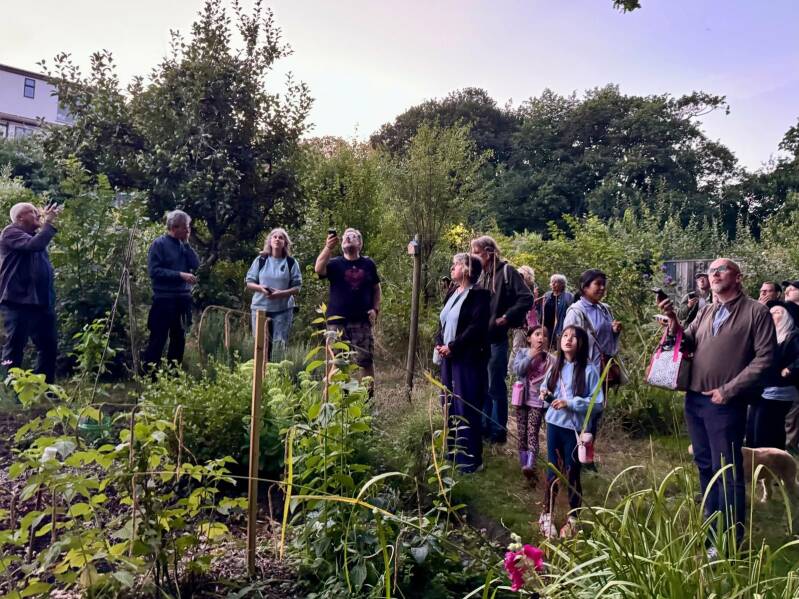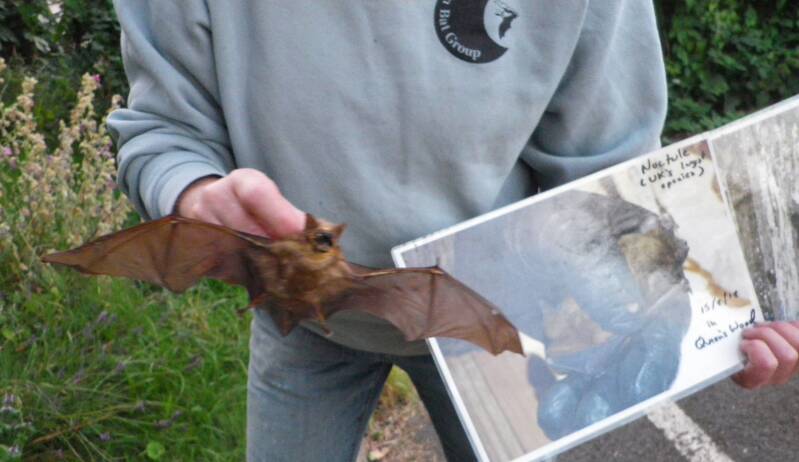Report on bat event Sunday 4 August 2024

Photo by Zoe Norfolk. Actually, in near darkness. Participants looking up for bats, holding and listening to detectors. Cindy Blaney 3rd from left.
More photos below.
Around 25 people came and enjoyed a fascinating experience. After a 'show and tell', Cindy shared out bat detectors. These click when they pick up the ultrasonic sounds emitted by bats. We detected and saw a small number of bats hunting above the allotments. However, the bats we see on summer evenings above our site are probably passing through en route to feeding grounds in the Lee Valley - commutes of 25 km are not unusual. Cindy thought the boating lake behind the Palace with its midges could also be a good feeding site. We walked there, and so it proved, with the bat detectors clicking continously and bats flying over and swooping close to the water. The clicks were a tiny indicator of the almost entirely hidden world inhabited by bats.
It was great to see our local bats, but just a fortnight before our event, the Guardian published this article expressing concern about the decline in bat numbers: Where are all the bats? – alarm as numbers fall in England.
The crash in insect populations is the cause of the decline, and makes it all the more important that we keep small patches of natural biodiversity where we can on our site, create ponds, even small ones for the insects they produce, and think about growing a patch of plants that support moths. Perhaps also we all need to be more tolerant of caterpillars on at least some of the crops we grow so that we do have moths and other flying insects over our site.
Below - Three photos of a noctule bat held by Cindy (the bat had been found dead in Highgate Wood, and stuffed). The noctule is the largest of the British bats

Photo: Bob Hare

Photo: Bob Hare

Photo: Zoe Norfolk
Bat evening Sun 4 August 2024
Poster designed by Sally Geeve

Create Your Own Website With Webador